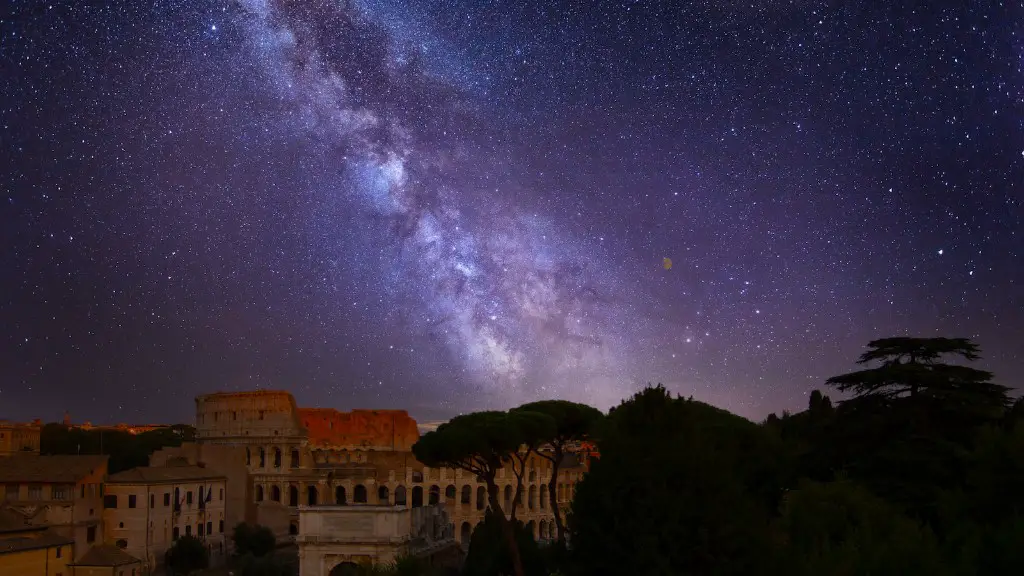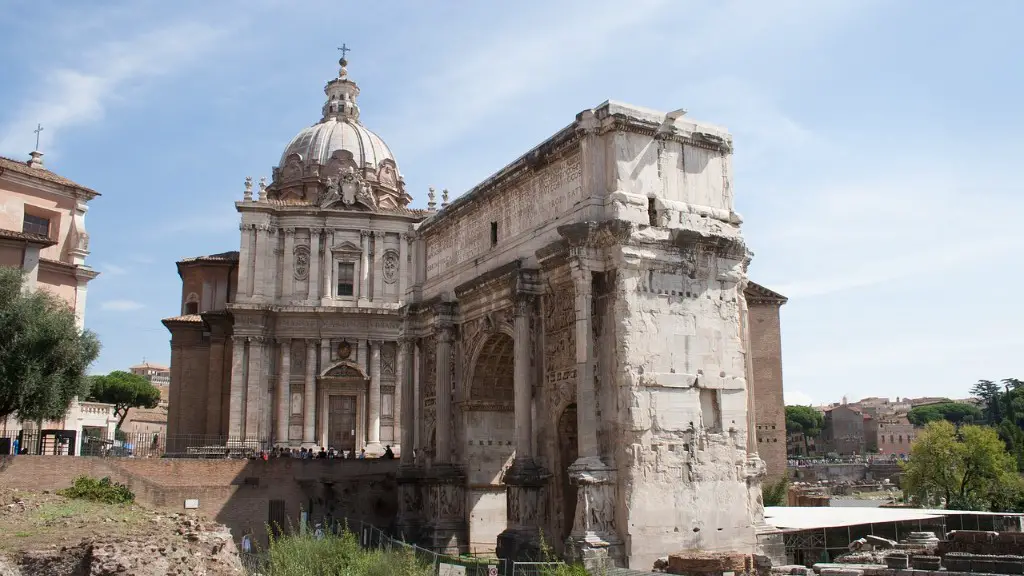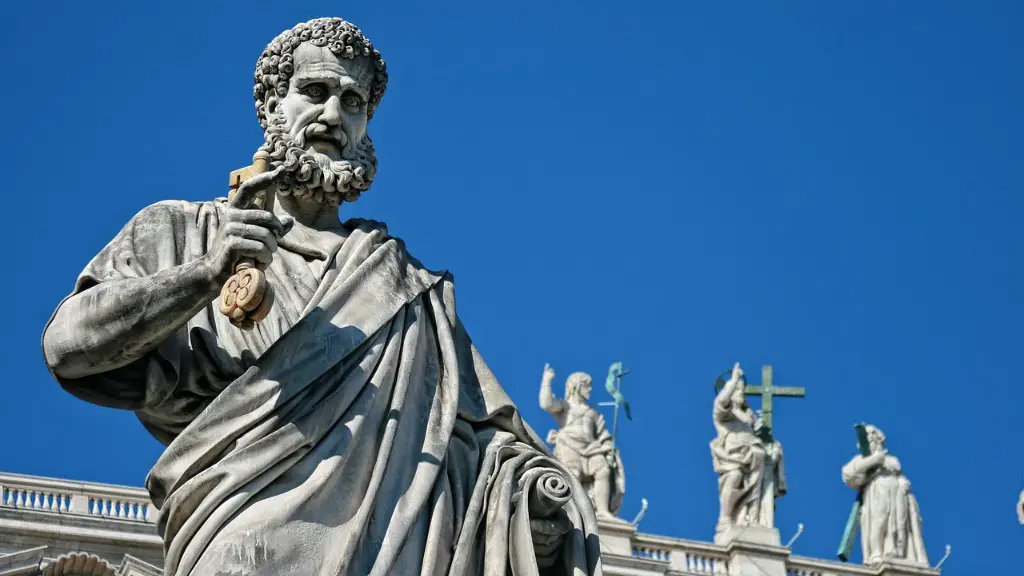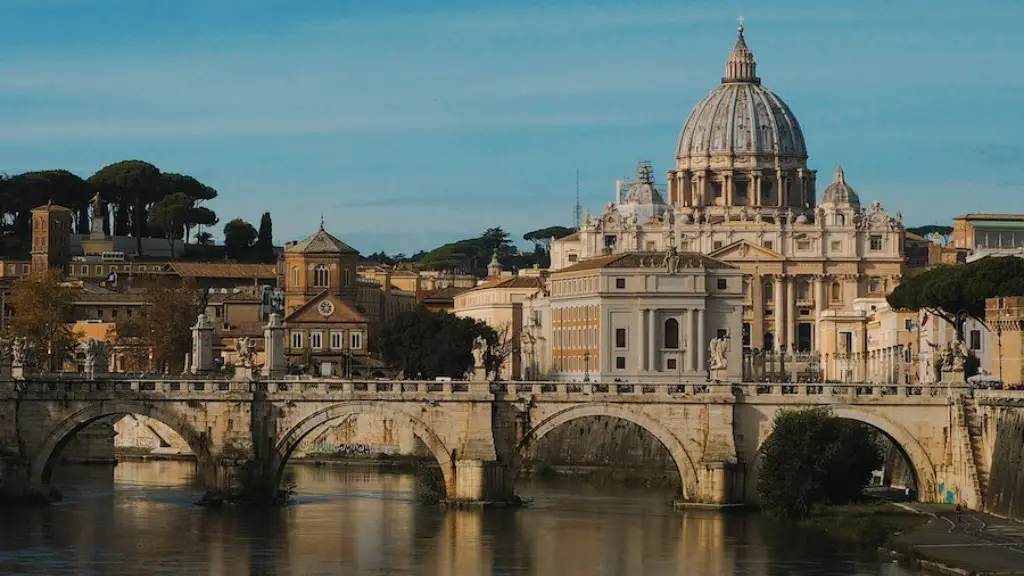The history of the ancient Roman Republic is a familiar tale. From its birth in 509 B.C. to its fall in 27 B.C., it has been told and retold through the ages. Yet, what was the Roman Republic and why did it survive for so long? The Republic was a form of government that allowed elected individuals to make decisions for the people. It was a time of great political, religious and cultural advancements. Under the Republic, Romans could live their lives without living in fear. This was a huge contrast to previous empires where citizens feared their leaders.
At the center of the Republic was not just a government body, but also the society which it served. Under the Republic, Rome had a strong economy. Its wealth was largely derived from trade and its strong currency, the Denarius. Its social system included a wide range of classes such as patricians, plebeians and freedmen. In addition, the Roman religion was highly respected and although it changed throughout the Republic, most of the religious practices survived.
Romans were proud of their Republic and many of its symbols were widely used throughout the Empire. The most famous symbol was the fasces which included an axe bounded by a bundle of rods. This symbol stood for unity and strength and was used throughout the Republic. In addition, the eagle, the wolf and the olive were all prominently displayed on coins, buildings and monuments. Together, these symbols represented the glory of the Republic.
The Republic was governed by a number of political institutions, the most prominent of which was the Senate. The Senate was made up of 500 appointed and elected members who represented the people of Rome. They could make laws, pass decrees, and even declare war. Although the Senate was the most powerful institution, there were other branches of government, such as the tribunes and the consuls, who each had their own roles in managing the affairs of the Republic.
The period of the Republic saw some of the most important events in Roman history, such as the Punic Wars, Julius Caesar’s dictatorship, and the rise of the Roman Empire. During the latter stages of the Republic, the government became increasingly divided, leading to civil wars and eventually, the fall of the Republic in 27 B.C. Despite this, the legacy of the Republic continues today in the architecture, art, and culture of many modern cities around the world.
Various Figures of The Ancient Roman Republic
Throughout its existence, the Roman Republic was ruled by a range of powerful figures. Foremost among them was Julius Caesar, who was later declared a dictator for life in 44 BC. Caesar was a popular general, orator and statesman, known for his military successes and political maneuvering that led to vast changes within the Republic. Before his death, he declared the Julian calendar and made other legislative reforms. Following his death, his adopted son Octavian took power and declared himself the first traditional emperor of Rome.
In addition to Julius Caesar, other notable figures of the period include Cicero, Cato the Younger, Coriolanus and Brutus. Cicero was a renowned orator and statesman who campaigned against autocratic rule. Cato the Younger was a Stoic philosopher, who opposed the grant of powers to Julius Caesar. Coriolanus was a general whose efforts to overthrow the Roman Republic were eventually repelled. And Brutus was a senator who participated in Caesar’s assassination and later lost his life in battle.
Although the Republic had many powerful figures, the ultimate power of the government rest with the people. Throughout the age of the Republic, the Roman people had the power to elect and remove their own officials, as well as pass or revoke laws. This provided them with an important degree of autonomy.
It is clear that the legacy of the Republic continues to this day. Its lasting impact on the world serves as a reminder of the great society which it fostered. In addition to its social and political advances, it provided the basis for the future of Roman civilization, which the world still experiences today.
The Roman Military
The Roman military was one of the most powerful forces in the world during the Republic’s reign. It had a formidable land army and was a major naval power as well. The Roman army was organized according to sophisticated hierarchical structure and equipped with the latest weaponry, including swords, spears, shields, and bows. During the Republic’s reign, they had control of much of the Mediterranean region, from the coast of Britannia to the gates of Ravenna.
The Roman navy was made up of smaller battle fleets, traditionally known asquadriremes, which were ships with four banks of oars. Gaius Marius was an influential military leader who developed new tactics and technologies around the time of the late Republic, including the use of the warship and siege engines. He also standardized the equipment and uniforms of the Roman army, which greatly improved its effectiveness.
The Roman military was also renowned for its legions. These were large disciplinary units, formed from thousands of professional soldiers. Each legion had its own unique emblem, as well as a specific function within the system. The legions were responsible for maintaining Rome’s political and military dominance, particularly during the Republic’s expansion.
In addition to its military power, the Republic had a significant impact on its neighbours. Rome’s proximity to the Mediterranean and its various allies meant that the Republic was constantly expanding its territory. This included the conquest of Greece, Egypt and the widespread adoption of Roman laws, customs and culture.
Rise And Fall of Ancient Roman Republic
The period of the Republic saw many changes as Rome increased its power and influence. Chief among these was the rise of Julius Caesar. In 49 B.C., he crossed the Rubicon with his army and was declared dictator of Rome. He declared sweeping reforms that focused on improving the lives of the lower classes. The Republic was divided between those who supported Caesar’s ideas and those who opposed them, leading to a civil war which lasted until Julius Caesar was appointed permanent dictator of Rome in 44 B.C.
This marked the beginning of the end of the Roman Republic. In 27 B.C., Octavian declared himself the first emperor of Rome.Although the Republic survived in form, it had been severely weakened by political divisions, economic instability, military defeats, and continuous civil war. Finally, in 18 B.C., the Roman Senate officially declared the Republic to be at an end.
Interestingly, remnants of the Republic survive to this day. The Roman legal system, which was first developed during the Republic, still exists in the present day in many countries. In addition, the symbols which were used to represent the Republic are still used in many locales. For instance, the eagle and the fasces are still used in many countries around the world. The history of the Republic is a remarkable testament to the power of resilience and resilience of strength.
The Significance of Ancient Roman Republic
The significance of the ancient Roman Republic is immense. First, it marked a period of great political and social achievements. As a result of its reforms, rights, and liberties, the Roman Republic laid the groundwork for the development of future civilizations. The invention of public prosecutor, debt ceiling, and digital democracy can be traced back to its legacy. Second, it was a major player in bringing about the classical civilization. It was instrumental in conquering its neighbours, establishing trading networks, and introducing Roman culture to the world.
Third, the Republic laid the foundation for the Imperial Age. While it was dissolved in 27BC, many of its major institutions remained intact. From the Roman Senate to the Julian calendar, many of the major aspects of the Republic were retained under the Empire. Finally, the Republic is an important part of western culture. Its history, art, and culture have influenced virtually every aspect of the western world. From its form of government to its art and architecture, the influence of the ancient Romans is still evident in the present day.
Legacies Of Ancient Rome Republic
The legacy of the ancient Roman Republic has endured to this day. It laid the foundations for developments in politics, law and warfare, as well as art and architecture. Furthermore, its influence still can be seen in the western world, where the ideas of democracy and the rights and responsibilities of citizens have their roots in the Roman Republic.
It was also a major factor in the development of the western world’s economies. Its currency, so important to economic and political life across Europe, was created during this period, as were the laws which governed commerce. Similarly, the Roman law system, including the Twelve Tablets of Law and the Twelve Tables of Legal Procedure, remain a cornerstone of many of the world’s legal systems and continue to be taught in schools.
The legacy of the Roman Republic can be seen in its religious institutions. The religion of Rome, both within its own borders and abroad, was highly influential and remains central to the study of Religions. Its pantheon of gods included Jupiter, Juno, and Minerva, while its rituals and ceremonies have inspired artistic works, literature and classical conceptions of beauty. This legacy of religious ritual persists to this day, with churches still devoted to the Pantheon and its Roman gods.
The Roman Republic also had a profound influence on culture. Its art and architecture, including such famous monuments as the Colosseum, were a hallmark of its identity and its cultural production. Similarly, its literature has endured, from the poetry of Virgil to the novels of Cicero. The Roman Republic also established a strong intellectual foundation, as seen in its advancements in mathematics, engineering, and science.
Conclusion
The Roman Republic was a remarkable period in history. Its influence continues to be felt today, through its political and legal systems, its culture and art, and its enduring legacies. Its symbols, philosophy and impact on western civilization still remain with us, and it is a reminder of a time when power was shared, justice and freedom reigned, and success was earned through hard work and determination. We should be thankful that this period of history still serves as an inspiration to us today.





